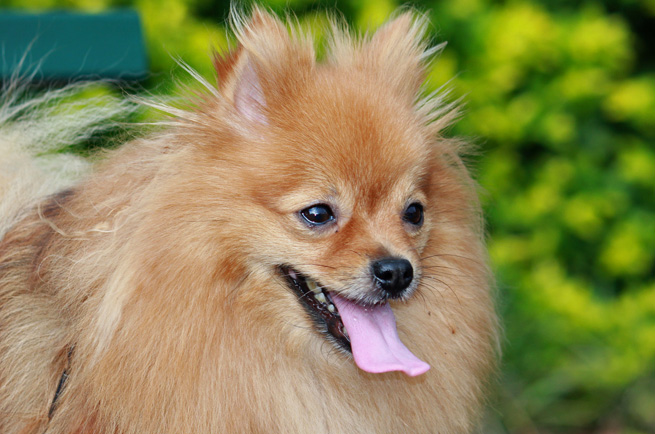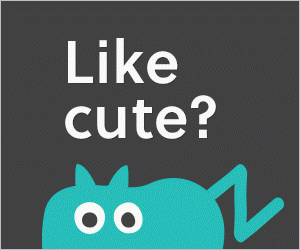Pomeranian
The Pomeranian (or Pom Pom as it's often called—too cute!) is a friendly breed with bags of personality. Alert and playful, they resemble miniature (fluffy) foxes. They move freely in a bouncy and buoyant way and are extrovert so love nothing more than being the centre of attention.
Other Names
Dwarf Spitz, Loulou, Pom, Pom Pom
Country of Origin
England
Colour
Black, brown, chocolate, beaver, red, orange, cream, orange sable, wolf sable, blue, white or particolour.
Size
Small
Height / Weight
Measuring between 18 to 22cms for the smaller variety and 22 to 28cms for the larger ones and weigh between 1 to 3kgs; bitches can be heavier than dogs.
Health
Loose knees, open skulls, low blood sugar, loss of teeth, dwarfism and eye problems have all been reported. Dislocation and broken bones can be common and great care must be taken with puppies to deter them from jumping. Common ailments: Bones Developmental - Patellar luxation, Brain (Acquired) - Hypoglycaemia, Brain (Congenital) - Hydrocephalus (water on the brain), Broken Bones, Endocrine - Hypothyroidism, Endocrine - Pituitary dwarfism, Eye - Blocked tear duct (tear staining, tear overflow), Eye - Progressive retinal atrophy (PRA), Reproductive (Male) - Retained testicles or cryptorchidism (one or both), Tooth Loss
Life Span
12-16 years
Intelligence
These smart little cookies respond well to training. Thanks to their extrovert nature that can become aggressive and dominant if not trained well.
Exercise
Low
Suitability (Children)
Low
Feeding
Pom Poms cost very little to feed as they are not big eaters, preferring to snack regularly rather than sit down to a set meal.
Feeding Cost
Up to $5 p/w
Other Cost
Excercise
THose little legs don't require too much exercise. Poms are happy with short walks or a run around the garden. Having said that, they can walk a fair distance before getting tired.
Hair Shed
Little
Ailments
Loose knees, open skulls, low blood sugar, loss of teeth, dwarfism and eye problems have all been reported. Dislocation and broken bones can be common and great care must be taken with puppies to deter them from jumping. Common ailments: Bones Developmental - Patellar luxation, Brain (Acquired) - Hypoglycaemia, Brain (Congenital) - Hydrocephalus (water on the brain), Broken Bones, Endocrine - Hypothyroidism, Endocrine - Pituitary dwarfism, Eye - Blocked tear duct (tear staining, tear overflow), Eye - Progressive retinal atrophy (PRA), Reproductive (Male) - Retained testicles or cryptorchidism (one or both), Tooth Loss
Grooming
Pom's thick double coat should be groomed to maintain its quality. The texture and thickness of the coat means it knots easily, particularly when it's being shed (twice yearly). It's recommended that you trim the coat of a Pomeranian every 1-2 months.
Grooming Frequency
Once a week
Trimming
Occassional
Named after the Pomeranian area in Central Europe, the fluffy Pom Pom descended from the larger-sized spitz dogs—the German Spitz in particular. THe Pom Pom's popularity has grown thanks to its many royal owners, such as Queen Victoria. The Pomeranian is particularly popular in the USA.
comments powered by Disqus



